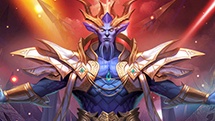Class Archetypes: The Cliché Of All Clichés
By Kei Beneza (dividelife), OnRPG Journalist
What’s the difference between a Warrior and a Berserker? What about a Mage and an Elementalist? You might think that some MMO games have more classes than the rest, but the whole idea of 40 classes is just there to fool you. Technically, MMO games take a specific class and break it down into tiny mini classes. This means that a THIEF or ROGUE in general can be broken down into Shadow Dancers, Assassins, or even some other version of the class we haven’t heard of before. By evaluating the different classes in games, we can in fact bring them down to only a handful of truly original classes. They may go by different names in different games, but any class you find in any game eventually boils down to one of the original classes mentioned below.
Why Divide Them?
First of all would be to extend the replay value of a certain game. As long as there are more characters to choose from, you’re bound to keep playing and experimenting. Since there’s a whole lot of VARIETY in the game, players are encouraged to create more characters to try all of the classes. Another reason would be the individuality among fellow players. Everyone wants to be special in their own way, hence the creation of 40 different classes in some games. With their own set of skills that kill (or heal, maybe even bargain deals), players are given a form of individuality, unlike other games where everyone can mimic your capabilities, as well as your entire set of skills with just a few clicks.

The classics
A good example would be the mages found in certain games. In some cases, mages are capable of casting fire, ice, and arcane magic. Most deem this as good in terms of customization since there are a whole lot of options to choose from. It would still be more awesome to be called something different rather than just simply being a different build. Some MMOs also feature this form of class exploit on a “laddered” field. This means that players are forced to feel that they are turning into something else when picking their so-called “second jobs”.
So what are the original Classes anyway?
Here I will show you the actual classes or archetypes that have been divided throughout time. Most of them are actually found in the 80’s version of pen and paper RPG books (namely, Dungeons & Dragons). In fact, if you recognize them, you’ll see that most books, movies, comics and console games keep to the classes as well! Since everyone refuses to share the same character or archetype concept, certain modifications are implemented to remove the chances of it being a ripoff. Gamers tend to want more content everyday, and that is why simply featuring a warrior, thief, and mage will no longer suffice.
Anyway, here are a couple of default archetypes.
The Brute
The brute used to be the main tank in the game, that is, until the Paladins arrived. Brutes are technically the Berserkers, Champions, Warriors, Barbarians, and Knights we know and love. They have high HP and pack a whole lot of PAIN. They are also capable of wearing the highest form of armor in terms of defense, but lack magic defense most of the time. Brutes are always better than spell casters in terms of PVP (despite their lack of knowledge). All they need to do is hack and slash, eventually taking the flag emerging victorious. They don’t really have to be buff, just as long as they fit the description. Take pain and deliver MORE PAIN. That’s all that matters.

The Brute archetype: knuckletastic, muscle over brains
The Thief
Rogues, Assassins (Shadow Dancer) or whatever you call them, the Thiefs specialize in both ranged and melee combat. Some games separate these two specialties to make way for more classes, but know that they all belong to one specific archetype. Thieves used to specialize in daggers only, but are now able to actually wield two swords similar to the Brutes. While the Brutes take damage and hit for double the pain, thieves rely on dodging and evasion due to their incompetence when it comes to vitality. Thieves also have the ability to trigger stealth, making them formidable foes, and just as the name suggests, good robbers.

The classic thief, hidden identity and sharpened blade
The Mage
Mages are masters of magic, and the class with the fewest variety in names (Archmage, Enchanter, perhaps). They can cast bolts of lightning along with fireballs that usually finish the job. Mages are limited to the lowest armor set possibly due to their excellent range and magic trickery. One problem with mages is that they really can’t afford to take a hit but, due to their massive damage that can surpass even the highest warriors, they have become VIPs in the field of battle. They can literally burn your arse off, so don’t mess with them. Due to their diverse choices when it comes to elements, mages have been separated into different forms of spellcasters. Not that I blame them, for mages have a unique feel for each element.
On a side note, maybe Storm (from the X-men) isn’t a mutant after all.

The mage archetype, vulnerable and flowing robes
The Necromancer/Black Mage
Necromancers are mainly mages who practice the forbidden arts in order to become stronger. They have the ability to raise the dead, as well as summon demons from the depths of the netherworld. They are also capable of using magic, but are limited to spells that usually hurt them in return. With high risks come high rewards, or something like that. Almost all classes associated with the Necromancer have the ability to drain life, making them the Dick Dastardly of the class archetypes. Much like mages, Necromancers (or Warlocks, Dark Casters, Shadowmage, etcetera) also suck at defense and need to be protected due to their small lifebar. It’s worth it though.

The Necromancer archetype has crossed the borders of what is accepted
The Holy Knight
Whether you call them Paladins, Crusaders, or Holy Knights, these dudes are one of the feared (if not the most) among the class archetypes. They can heal, deal damage, and smite evil whenever they see fit. It’s the ‘good’ (or holy, or light) that drives them, usually from a religious point of view, makes them nearly unstoppable. These guys are undeniably the cheapest class in the game; however, it is also this form of cheapness that makes them formidable tanks when raiding with a party. With ever present sword and shield, they’ll charge into battle without hesitation.

The Holy Knight archetype, the good force and loved by many
The Ranger
Rangers (Archers, Hunters, Bowmen, Gunner) are mid balanced characters who specialize in the field of nature. They can tame beasts as well as other creatures of the wild to aid them in battle. Rangers are similar to the likes of Legolas (Lord of the Rings) with a few extra kinks, such as not being limited to bow wielding <_< LOL. Rangers are excellent trackers as well, giving them the extra hand in PVP. Although these individuals are limited to mid-ranged armor, their allies (or pets) give them an outrageous attack power that can kill even the mightiest of Brutes. They also prefer to fight at long range, along with their pets, but ultimately Rangers are dangerous regardless of range.

The Ranger archetype: draped in leather, knows all the tricks
The Healer
Unlike the other archetypes, Healers are usually called Priests in most games, and the only way for them to be individualized would be through cross-classing. Healers are normally excluded in most games as they tend to focus more on attacking. Healers on can be merged with other characters in order to give them the ability to deal damage rather than simply being a person who heals wounds. Otherwise solo-ing would be pretty useless. This particular class is no longer relevant in most cases due to the stereotypical belief that healers are boring by nature. They have been made ‘cooler’ by shifting from healing to something else (Healing mage, Cleric, Shaman, Shapeshifter, Druid) and usually have some of the more important buffs for the groups.

The healer archetype, gentle and always available for some TLC
The Blackguard
Blackguards are pretty new in the class archetype scene. If necromancers serve as the counter-mage, then this class serves as the counter-paladins. Blackguards do the exact opposite of what paladins are capable of. For instance, they inflict wounds and diseases instead of healing them. What we have here are holy knights who have lost their faith. World of Warcraft’s Death Knights can also be considered as a Blackguard. They (in some cases) also carry the might and defense of the Paladin, and can be reliable tanks when taken along. The blackguards will have something unholy, demonic and wicked about them, which makes them excellent dark characters to balance the overly good and happy party members.

The Blackguard archetype: the dark knights whose force stems from evil
Multiplying
If I must state an example, Lineage 2 had a whole variety of characters. If you think about it, some games feature the main archetype along with their subclasses in one package. It makes things a whole lot easier to comprehend for some players, but being a different class (or being forced to think that you are one) feels a whole lot better.
The question is: Does it really matter what you are called?



